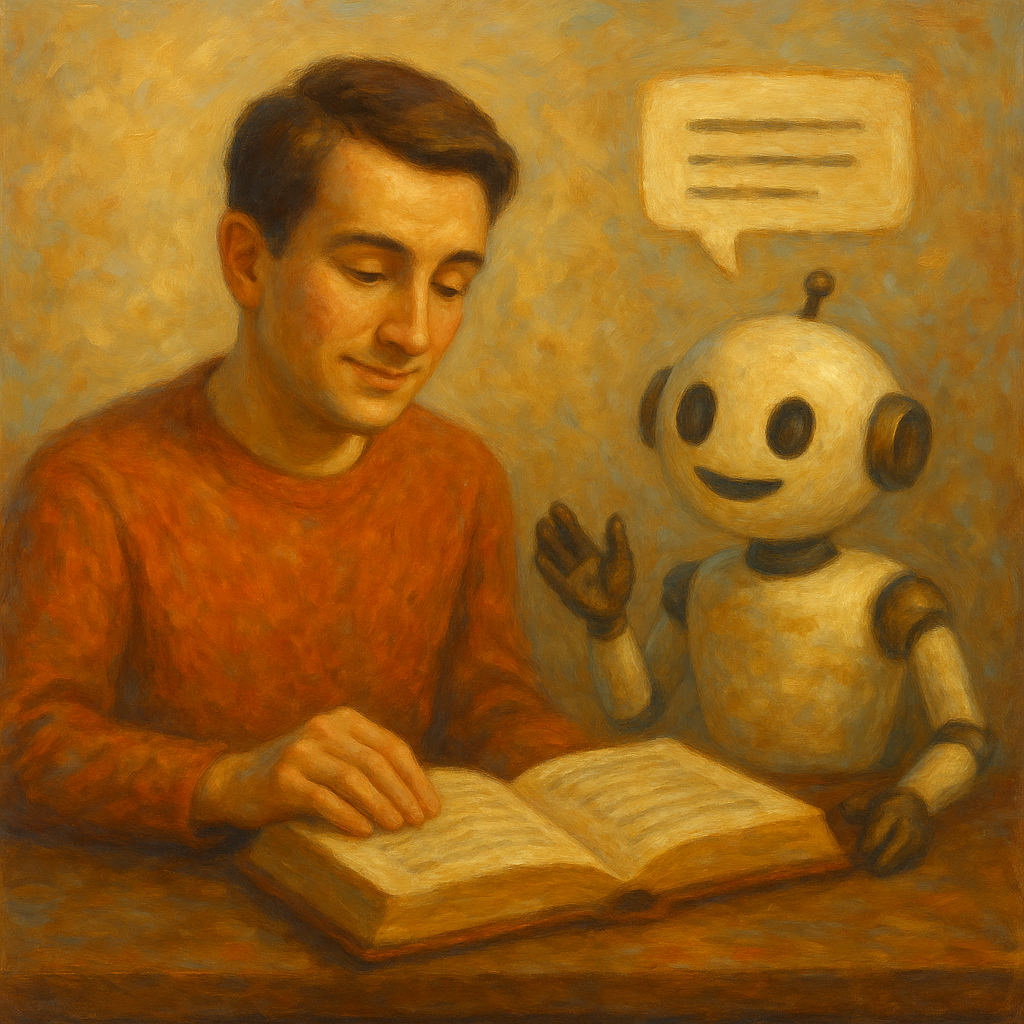
Don’t Outsource the Page:
How to Use ChatGPT as a Reading Companion—Without Skipping the Work
We’re reading differently now.
Not because reading is broken. But because our time, focus, and attention are under pressure—and AI is changing how we interact with ideas.
Lately, I’ve been experimenting with a shift:
→ I don’t treat ChatGPT as a book summarizer.
→ I treat it as a reading companion.
It doesn’t replace my reading. It deepens it.
Let me explain.
The Real Mistake: Outsourcing Thinking
Most people use AI like this:
“Summarize this book for me.”
And sure, you’ll get something back. But what you miss is the experience of wrestling with the ideas. The transformation doesn’t happen when you read the words—it happens when you reflect, question, and reshape them.
If you’re serious about learning, here’s the mindset shift:
Don’t use AI to do the reading.
Use it to sharpen your reading practice.
What a Good Reading Companion Actually Does
Here’s how I now use ChatGPT with my reading—not instead of it:
1. Clarify, Don’t Simplify
When I hit a tough paragraph, I don’t skip or gloss over it.
Instead, I paste the section and ask:
“What is the author really trying to say here?”
“Are there assumptions I’m missing?”
“How would you explain this to someone new to the topic?”
This keeps me engaged—but brings extra clarity.
2. Test My Understanding
After reading, I might write a short summary in my own words. Then I ask:
“Here’s how I understood this chapter—what might I be overlooking?”
This is where things get interesting.
AI challenges blind spots. Points out contradictions. Asks good questions I didn’t think to ask. It turns my passive reading into an active dialogue.
3. Spot Patterns in My Highlights
I still do the highlighting. But when I feed those highlights into ChatGPT and ask:
“What’s the core idea across these quotes?”
“Is there a unifying theme here?”
It helps me surface patterns I missed—and see where the author is repeating a deeper point.
4. Turn Raw Notes into Sharper Ideas
When I write rough notes, I’ll often follow up with:
“Help me make this more atomic.”
“What’s the claim behind this note?”
“How could this connect to something else I’m working on?”
I’m still the one thinking. ChatGPT just helps me express it better.
5. Make It Relevant to Me
This one matters most.
I don’t just want to understand what I read—I want to connect it to my context.
So I ask:
“How does this relate to knowledge management?”
“What can I learn here that applies to creative systems?”
“Where does this clash with something I already believe?”
Now the reading isn’t just stored.
It’s alive in my system.
Reading in the AI Era Is a Team Sport
You don’t need to read faster.
You don’t need to consume more.
You need a system that helps you think with what you read—and apply it.
That’s what a reading companion does.
Not to replace your effort, but to extend your insight.
Practical takeaway:
Treat ChatGPT like a quiet, thoughtful friend you can bring into the margins of your reading—asking questions, pushing back, helping ideas take root.
Still your book. Still your brain.
Just a sharper way to think alongside it.
Want to see how I use this in my note-taking or PKM setup? Let me know—I’ll break it down.
